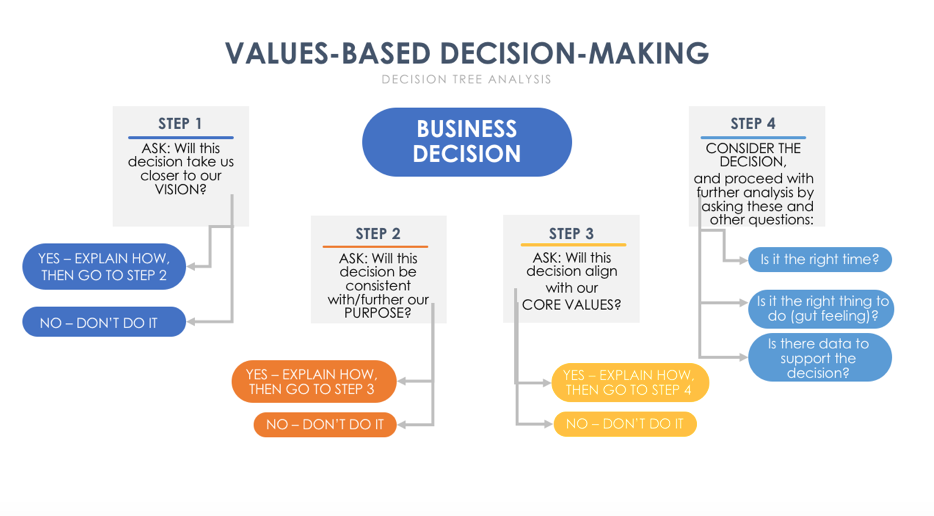Simplifying mission and vision statements
Simplifying mission and vision statements

Today’s focus will be on vision and mission. Specifically, what is a vision and what is a mission, and how should you go about creating vision and mission statements for your business.
Vision and mission are closely tied together, but they are different. Many people get them confused – including some of the biggest companies in the world, in my opinion. For a long time I was confused by them. But after studying this for a while and working with organizations on their mission and vision, I’ve figured out a simple way to approach vision and mission.
First off – and this may be contrary to what most people think – a business doesn’t necessarily need both a vision statement and a mission statement. Because they are so closely tied together it can cause more problems/confusion than benefit to try have both a vision and a mission statement.
The common wisdom around vision and mission is that vision is the why of the business and mission is the what. But if you actually look at the vision and mission statements of some of the biggest companies in the world, this really isn’t the case. The what and why of those companies is mixed into both vision and mission statements. We’ll look at some examples in the next article.
I think the best way to start the process of creating a vision and mission for your business is to describe your business using this formula: We do X, so that Y.
It’s a mixture of what (X) your business does, and why (Y) (see what I did there?) it does it. A hypothetical example might be: We build the world’s safest commercial spaceships (X), so that families can experience interplanetary travel (Y). Providing families the experience of space travel is the why – the purpose – of the business. Building the spaceships is the means (what the business does) to achieve that purpose.
If your business is able to concisely express the X and Y in this manner, you’ll be light years ahead (the puns are just flowing today) of most businesses in terms of articulating your purpose.
I would suggest you make that your mission statement and, if you like, change the start of the sentence to, Our mission is to….(i.e. Our mission is to build the world’s safest commercial spaceships, so that families can experience interplanetary travel).
Then, in crafting your vision statement, ask what does the world (or your community or industry, etc.) look like when you’ve had success delivering on your mission? How is it different than today? If families can experience interplanetary travel, how does that make their lives better? How does it make the world better?
The vision could be something like, A world filled with happy families with celestial stamps on their passports. Or maybe, Our planet understands our place in the universe.
At the end of the day, what’s it all for? All the time, energy, money, struggle, blood, sweat, and tears that you and your team pour into your business—what’s it all for? When you’ve peeled back all the layers and answered that question, that’s when you’ve found your vision.
This can be difficult to do, much more difficult that filling in the we do X, so that Y formula. One way to think about it is to imagine a snapshot of the world (or your community, or industry) that would provide evidence that your business has achieved its vision. In the example above, the snapshot is of families with celestial stamps on their passports. It’s something you can actually picture in your mind—hence vision—that proves that your business has made the positive impact it set out to make.
If you can’t find something that works for you in terms of a vision statement for the time being, that’s ok. Having a good mission statement that follows the X/Y formula is an excellent way to articulate the purpose of your business in and of itself. The vision might reveal itself to you later.
In the next article I will review the vision and mission statements for some of the world’s most famous companies, which may help you in the process of creating or revising yours.



